
Hidden temples in siem reap : preah khan & neak pean
Overwhelmed by crowds at Angkor Wat? Many travelers overlook Siem Reap temples’ hidden gems, missing the chance to explore quieter, equally captivating sites. This guide reveals the allure of secondary temples like Preah Khan, Neak Pean, Ta Som, East Mebon, and Pre Rup—each offering unique architecture, historical depth, and a glimpse into Khmer Empire artistry. Discover lesser-known wonders, from tree-embraced gates to sacred water rituals, with practical tips to enhance your journey beyond the iconic Angkor complex.
Preah Khan: The Sacred Sword of Angkor
Preah Khan, built by King Jayavarman VII in 1186, functions as a Buddhist temple. Its name translates to « Sacred Sword » in Khmer. This temple reflects the king’s reverence for his father and the Khmer Empire’s spiritual legacy.
This temple honors Dharanindravarman II, Jayavarman VII’s father. It served as a temporary city during Angkor Thom’s construction. The site housed religious and administrative activities, showcasing the empire’s organizational prowess at its peak.
Preah Khan features four main entrances aligned with cardinal directions. Processional ways connect its structures, including galleries and courtyards. This layout reflects Khmer architectural symmetry and spiritual symbolism.
| Attribute | Details |
|---|---|
| Name and Meaning | Preah Khan (« Royal Sword » or « Sacred Sword ») |
| Construction Period | Built between 1184-1191 by King Jayavarman VII |
| Dedicated to | Dharanindravarman II (father of Jayavarman VII) |
| Religious Significance | Combines Buddhist and Hindu traditions; served as monastery and university |
| Location | 13 km northeast of Angkor Thom near Siem Reap |
| Area | 56 hectares with rectangular layout |
| Architectural Features | Laterite walls with 72 Garuda-naga statues; central Buddhist sanctuary |
| Personnel Count | 97,840 staff including 1,000 dancers and 1,000 teachers |
| Historical Decline | Declined from 15th ceematically destroyed during Jayavarman VIII’s reignntury due to reduced royal support |
| Restoration Timeline | Partial restoration 1939; ongoing since 1991 by World Monuments Fund |
| Destruction Evidence | Buddha statues systematically destroyed during Jayavarman VIII’s reign |
The two-story structure contains columns believed to house the sacred sword. This building, located near dancer halls, symbolizes military and spiritual authority within the Angkor complex.
Carvings blend Buddhist and Hindu elements throughout the temple. Avalokiteshvara representations coexist with Hindu deities, reflecting Jayavarman VII’s religious syncretism.
Preah Khan functioned as a monastic university with 1,000 teachers. The site hosted religious ceremonies, education, and administrative functions under Jayavarman VII’s rule.
- Eastern Gopura with Entwined Trees
- Bayon-Style Face Towers
- Hall of Dancers
- Garuda-Naga Statues
- Laterite Wall Enclaves
The Hall of Dancers features intricate bas-reliefs of performances. This space likely hosted ritual dances that connected spiritual narratives with Khmer artistic expression.
World Monuments Fund manages preservation since 1991. Stabilization efforts focus on maintaining structural integrity while preserving natural integration with jungle growth.
The eastern entrance showcases trees merging with stone structures. Roots intertwine with gopuras, creating iconic visuals of nature’s reclamation of ancient architecture.
Visitors find Preah Khan best explored early morning or late afternoon. These times offer fewer crowds and optimal lighting for photography of its expansive 56-hectare complex.
Preah Khan sits 13 km northeast of Angkor Thom. Visitors access it via tuk-tuk, bicycle, or private transport as part of the Grand Circuit tour.
Preah Khan exemplifies Khmer Empire’s zenith under Jayavarman VII. Its scale, religious syncretism, and administrative functions reveal the empire’s sophistication and spiritual priorities.
Here is the HTML section for Neak Pean: The Healing Waters of Angkor, strictly following the plan and directives:
Neak Pean: The Healing Waters of Angkor
Neak Pean, built by King Jayavarman VII in the late 12th century, is a Buddhist island temple in Siem Reap. Its medicinal purpose linked to water symbolizes healing, with pools representing elements to balance bodily humors.
This artificial island represents Lake Anavatapta, a sacred Himalayan lake in Buddhist lore. Four surrounding pools symbolize earth, water, fire, and wind, reflecting ancient Khmer spiritual and medical beliefs.
King Jayavarman VII dedicated Neak Pean to Lokeshvara, a bodhisattva of compassion. The temple served as a therapeutic site where water rituals cleansed physical and spiritual ailments.
Neak Pean features a central basin with four smaller pools. Water flows through animal-headed gargoyles (elephant, lion, horse, human) into connected reservoirs, echoing elemental balance in Khmer design.
“Neak Pean” means “entwined serpents” in Khmer. Stone nagas coil around the temple’s base, symbolizing protection and water’s sacred role in Khmer cosmology.
Four gargoyles depict elephant, horse, lion, and human heads. These channeled water between pools, blending artistry with functional hydrology in Jayavarman VII’s healing vision.
A central statue of Balaha, a mythic horse, once stood in Neak Pean. This figure, linked to saving merchants, emphasized the temple’s role in protection and divine intervention.
Visitors believed each pool cured specific ailments. Water flowed from the central source through symbolic channels, aligning with Hindu-Buddhist traditions of purification and elemental harmony.
Seasonal changes alter Neak Pean’s appearance. Pools fill during rains, revealing full aquatic design, while dry seasons expose stone structures for clearer photography and exploration.
A wooden walkway crosses the baray, leading to the island. Visitors pass through tranquil landscapes, framing the temple’s serenity.
Conservation focuses on stabilizing Neak Pean’s water systems. Ongoing work preserves unique structure, balancing modern access with historical integrity.
Neak Pean’s quiet setting and reflective pools create stunning photo opportunities. Its smaller scale compared to Angkor Wat offers intimacy, with light-play enhancing its sacred atmosphere.
Neak Pean lies 15 km northwest of Siem Reap. It is part of the Grand Circuit, reachable by tuk-tuk, bicycle, or guided tours of Angkor’s secondary temples.
Ta Som: The Jungle-Embraced Sanctuary
Ta Som, a small Khmer temple built by Jayavarman VII, sits northeast of Angkor Thom. Its name translates to « Ancestor Som, » honoring the king’s father. This 12th-century structure blends spirituality with natural overgrowth.
Dedicated to Dharanindravarman II, Jayavarman VII’s father, Ta Som mirrors Preah Khan’s purpose. Constructed during the late 12th century, the temple served as a spiritual center within Angkor’s vast religious network.
Ta Som’s layout features a central tower and three enclosures. The outer wall spans 200m x 240m. Bayon-style face towers at entrances reflect Jayavarman VII’s architectural legacy across Siem Reap’s temples.
The eastern gopura is wrapped by a massive fig tree. Roots grip stone carvings, merging nature and design. This overgrown structure became Ta Som’s most photographed feature, symbolizing Angkor’s timeless decay and rebirth..
Bayon-style face towers adorn Ta Som’s gates. Each gate displays four serene Avalokiteshvara faces. These carvings, typical of Jayavarman VII’s era, align with Angkor Thom’s spiritual iconography and Khmer artistic identity.
- Tree-Entwined Eastern Gopura: Strangler fig roots envelop the entrance
- Avalokiteshvara Carvings: Unusually large depictions of the bodhisattva
- Bayon-Style Face Towers: Serene, four-faced stone towers at gateways
- Laterite Construction: Reddish stone walls contrasting with lush surroundings
- Jungle Integration: Minimal restoration preserves wild, overgrown aesthetic
Devata carvings grace Ta Som’s laterite galleries. These celestial figures, more individualized than Bayon’s, symbolize divine guardianship. Their detailed jewelry reflects Khmer craftsmanship and spiritual symbolism.
Ta Som remains minimally restored compared to major temples. Vegetation covers parts of its structure. Preservation efforts began in the 1990s but left much of the site in its natural, overgrown state.
Ta Som sees fewer visitors than Angkor Wat or Bayon. Mornings offer solitude, with 1-2 hours sufficient for exploration. Its remote location on the Grand Circuit keeps crowds minimal.
A moat surrounds Ta Som’s outer wall. The western entrance crosses dry land, leading through overgrown paths. This approach highlights the temple’s integration with nature, enhancing its mystical atmosphere.
Exploring Preah Khan, Neak Pean, and Ta Som highlights Siem Reap’s secondary temples’ unique heritage. These lesser-known gems offer immersive experiences, ideal for travelers seeking to deepen their Angkor journey beyond iconic sites. Prioritize them to grasp Khmer artistry—where history, spirituality, and nature intertwine memorably.
FAQs About the Tours
Any question ?
What are the best temples to see ?
Angkor offers a wealth of temples, but some stand out. Angkor Wat is the most famous, a stunning example of Khmer architecture that transitioned from Hindu to Buddhist use. Bayon Temple, located in Angkor Thom, is known for its massive stone faces. Ta Prohm is famed for the trees intertwining with its stone structures.
Other notable temples include Phnom Bakheng, offering panoramic sunset views, and Banteay Srei, admired for its intricate pink sandstone carvings. Beng Mealea, partially engulfed by the jungle, offers an adventurous exploration experience, while Preah Khan features sunlit corridors and columns.
Is 2 days enough for Angkor Wat ?
Two days can be sufficient to see the main sites of Angkor, allowing you to visit iconic temples like Angkor Wat, Angkor Thom, and Ta Prohm. However, this can feel rushed, especially given the heat and crowds. A longer visit, such as four days, provides a more relaxed experience.
With two days, you can follow the small circuit to see the major temples. For a more enriching experience, consider hiring a guide to learn about the Khmer history and symbolism, and use a tuk-tuk to navigate the archaeological park. A longer stay allows for exploring more distant temples and avoiding peak hours.
03
Is Angkor Wat a wonder of the world ?
Angkor Wat is widely considered a wonder of the world due to its beauty and immense size. As the largest religious monument globally, it showcases stunning Khmer architecture. Originally built as a Hindu temple dedicated to Vishnu, it later transformed into a Buddhist temple, reflecting Cambodia’s cultural and spiritual heritage.
The temple’s design, symbolizing Mount Meru, and its intricate bas-reliefs contribute to its grandeur. Angkor Wat is a symbol of Cambodia, featured on its national flag, and a major tourist attraction recognized as a UNESCO World Heritage site.
What is the oldest temple in Angkor ?
Preah Ko is the oldest surviving temple in the Angkor region, constructed in 879 by King Indravarman I. Located in the Roluos group, it predates Angkor Wat by over 200 years. The name « Preah Ko » means « the sacred bull, » referring to the statues of Nandi, the guardian of the Hindu god Shiva.
The temple consists of six brick towers adorned with intricate carvings. During its construction, Hinduism was the dominant religion, with Vishnu and Shiva being the most revered deities. Preah Ko offers a more peaceful, less crowded experience compared to Angkor Wat.
Expert Team
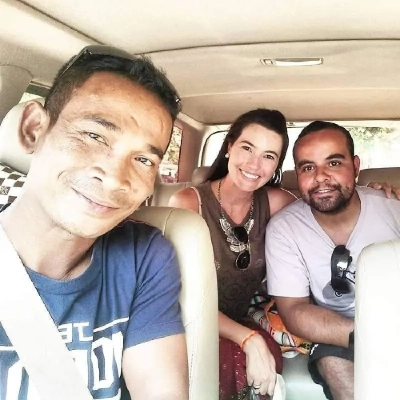
Kim Hak
MiniVan Driver
Hello Dear Valued Visitor !
My name is Kim Hak, and I’m a local Cambodian driver specializing in tourist services in Siem Reap, Cambodia. I drive a Grand Starex and offer taxi services and tours to all 25 provinces and cities (24-hour service available).
I am an experienced driver who has been driving since 2006, and I can speak English and Mandarin.
I love providing recommendations for interesting places in Siem Reap and showing my customers the best parts of Cambodia. I will ensure that my customers are well taken care of, safe, and have the best travel experience while visiting Siem Reap, Cambodia.
I look forward to showing you around Siem Reap, Cambodia! =)
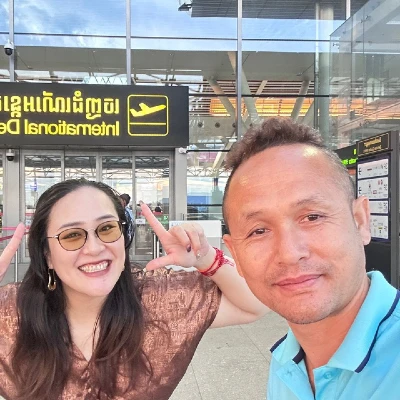
Sophara
Car Driver
Greetings, travelers! I’m Sophara, your friendly local guide and driver based in Siem Reap, Cambodia. With my comfortable SUV and Grand Starex vehicles, I’m ready to take you on unforgettable journeys throughout Cambodia’s 25 provinces and cities, any time of day or night.
Since 2008, I’ve been passionate about sharing the wonders of my beautiful country with visitors from around the world. Speaking both English and Mandarin, I bridge cultures while creating meaningful travel experiences.
I specialize in creating customized adventures that reveal both Cambodia’s famous landmarks and its best-kept secrets.. Your safety, comfort, and satisfaction are always my top priorities.
Ready to explore Cambodia with a local who truly cares about making your trip extraordinary? Let’s create amazing memories together!
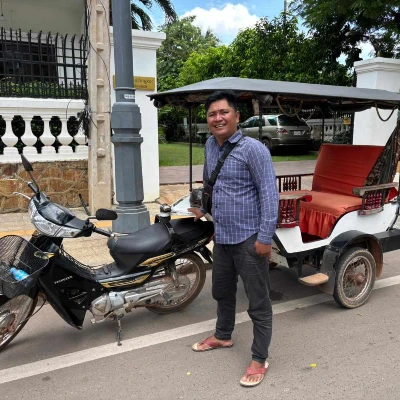
Mister Ra
Tuk-Tuk Driver
Hello there ! I’m Mister Ra, your local tuk-tuk driver and guide in Siem Reap, Cambodia. With my reliable tuk-tuk, I specialize in exploring the magnificent Angkor Wat temple complex and providing comprehensive city tours around Siem Reap.
For nearly two decades, I’ve been showing visitors the incredible temples of Angkor and the vibrant streets of our beautiful city. Speaking English fluently, I enjoy sharing stories and connecting with travelers from all corners of the world
Ready to explore Siem Reap’s treasures with a local who’s passionate about sharing his hometown? Let’s create some amazing memories together !
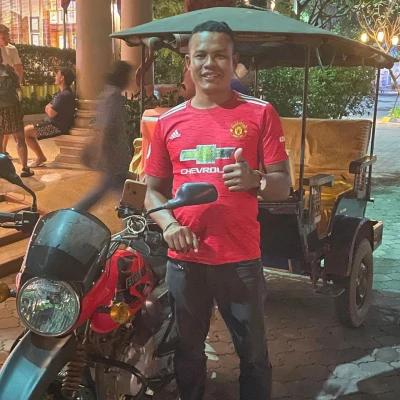
Chom
Tuk-Tuk Driver
Greetings, fellow travelers !
I’m Chom, your friendlyTuk-Tuk Driver here in Siem Reap, Cambodia.
With my reliable Tk-Tuk, I’ve been serving visitors since 2016, offering transportation and tours throughout Angkor Wat and beyond
Your comfort, security, and satisfaction are my personal mission. Every trip is designed to exceed expectations while respecting your time and budget.
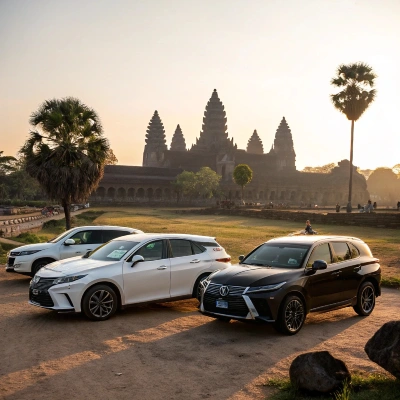
More CARS, More TUKTUK
if needed
Don’t worry we will have many other solutions when we will be fully-booked
We have many friends or relatives to call when needed
Only professional people of course